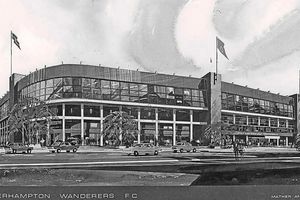Wolves, one of the 12 founding Football League sides in 1888, made Molineux their home in 1889.
Over the years, Molineux has seen the highs of the top flight winning sides of the 1950s and the Division Four lows of the 1980s - now, they are going into their eighth consecutive season in the Premier League under Chinese owners Fosun.
A historic football club with a well-known home - Molineux is a special place to many.
Chairman Jeff Shi said this week: "I have been to many stadiums in the UK and it's a good stadium" - and he is not wrong. Compared to some other top flight grounds, Molineux is still an excellent place to play and watch elite football.
However, it is also in desperate need of some modernisation and recent licks of paint have only papered over the cracks.
Plans to revamp Molineux have been shelved, seemingly indefinitely, and not for the first time.
In July 1958 Wolves had just won their second league title with legendary Billy Wright as captain and Stan Cullis as manager.
Often, crowds of more than 50,000 were in attendance and plans were being drawn up to transform Molineux.
The groundbreaking and ambitions plans, ordered by chairman James Baker, unveiled a 'stadium of the future' that would aim to cement Wolves' place as one of the biggest clubs in the world.
For just £500,000, Molineux's capacity would increase to more than 70,000 and have 14,000 seats.
Everything was in place for the project to go ahead, but conflict between the club and the council over the impact on the surrounding area saw the rebuild be rejected by a planning committee.
Efforts by Baker to change their minds were wasted and the plans never got off the ground.
Looking ahead to 1978 and Wolves were once again drawing up a transformation of Molineux as it was crumbling and badly needed a rebuild.
Attendances stood at around 20,000 to 30,000 during the 1970s but 53,379 against Leeds in 1972 and 48,918 against Liverpool in 1976 proved the club still had potential.
The Safety of Sports Grounds Act had been introduced and the wooden Molineux Street stand was deemed unsafe and chairman Harry Marshall was determined to demolish it, while also revamping the whole ground.

The 1978 proposal was a 'revolutionary' design and included space for 40,000 supporters
Blueprints for a 40,000 capacity stadium, with the corners filled in, were created with the aim of completing it by 1984.
It would cost £10million and Wolves purchased 71 terraced houses on Molineux Street and demolished them to make way for the new £2million stand, named the John Ireland stand after the club president.